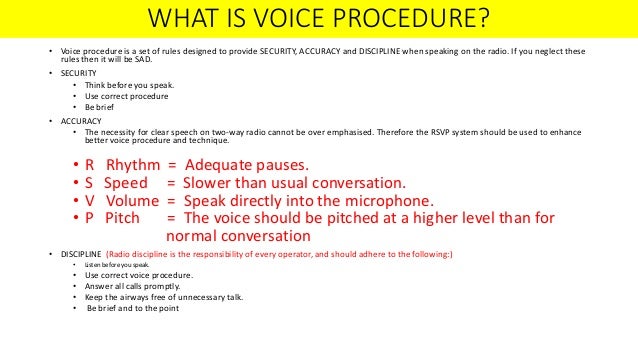

You must have seen in action movies how armed forces communicate using radio and wireless (walky-talky) sets. Mostly they speak English, but some of the words of radio lingo are mystery for common man. For example, roger is an oft-repeated word on radio conversation.
In simple English it means “understood” or “I got it”. Let’s get to know more of two-way radio jargon and their meanings.Following list shows meanings of the words and phrases often used during a two way radio communication. You may also want to read about. Radio Jargon. Mayday: I need help. Roger: Message has been fully received and understood. Wilco: “Will comply” (i.e.
I/we will carry out the orders). Read: Often used as a question; as in “do you read me?” the speaker is asking if the other party is able to listen to the radio clearly. Copy: Meaning is same as that of read. Used as “do you copy?”. Check/Copy that: Message is understood. Read back: Repeat this message back to me.
Correction: I made a mistake. Correct version is.
20: Location (for example “what is your 20?”). Acknowledge: Confirm that you understand my message. Download adobe photoshop portable indonesia gratis.
Confirm: My version is Is that correct?. That is correct: Yes, I do confirm. Words twice: Send every phrase twice.
Two-way Radio Etiquette In The Workplace
Stand-by: Wait. Obtain: Get. Affirmative: Yes. Negative: No. Dispatch: Send. Unable: Can’t.
Over: I have finished saying. Out: Call is being terminated. Say again: Repeat what you said. (silence): I have nothing to say. Also, something else I found that could also be helpful to those using a Citizen Band (CB) ten-codes.CB ten codes10-1 Receiving poorly10-2 Receiving well10-3 Stop transmitting10-4 OK, message received10-5 Please relay message10-6 Busy, please stand by10-7 Out of service, and signing off10-8 In service, and taking calls10-9 Please repeat message10-10 Transmission complete, standing by10-11 Talking too fast10-12 Visitors present10-13 How is the weather?10-16 Make pickup at10-17 Urgent business10-18 Anything for us?10-19 Nothing for you.
Fcc Two Way Radio Etiquette
A lot of us use two way radios in testing or driving with groups of friends where cell phone communications are more complicated than we need so a two way radio lets us leave an open channel to communicate. I found this excellent simple guide on basic two way radio etiquette. I had radio training as part of my seamanship class but even my habits have gotten sloppy over the years. This is a good read and might not make a bad sticky.New to two way radios? Not sure what the correct protocol is when you’re using your radio? Your Architect with two way radio business may set its own conventions, but here are some generally accepted rules of two way radio etiquette you might find helpful.Be preparedWhen you have the talk button pressed, no one else in your group can speak or be heard – two way radios are mostly a one-at-a-time system of communication, unlike telephones where you can interrupt and talk over each other. So it’s important to think about your message beforehand.If you leave the talk button pressed while you compose your thoughts, not only are you preventing anyone else joining in the conversation, you might be blocking someone on your frequency with an emergency message to transmit.
You’ll run down your radio battery faster, too!Identify yourself and the recipient of your messageThere may be a group of users all sharing the same radio channel, so it’s important (and good manners) to identify yourself immediately when you initiate a transmission. It’s also polite to get the attention of the person to whom your message is directed before relaying your message.For example: “Foxtrot123, this is Oscar456, OVER”.“OVER” is common radio lingo and lets the other person know you’ve finished speaking. There’s no point doing much more than identifying yourself and the recipient at this point. When you know you have the other person’s attention and they’re able to join the conversation, you can transmit the rest of your message.Be patientThe other person may not be able to respond immediately – be patient and give them time to reply before re-sending your call.Use short, clear and concise messagesAs two way radios only allow one person to speak at a time, it’s best to keep your transmissions short, clear and to the point. This gives other users an opportunity to acknowledge your message or request further clarification before you carry on with your next point.Radio users often repeat a message to make it clear that they’ve heard and understood the information. For example:Foxtrot123: 'Oscar456, this is Foxtrot123, assistance required at 32 Green Street, OVER'.Oscar456: 'This is Oscar 456, confirming assistance required at 32 Green Street. On my way, OVER'.Pause before speakingWhen you first press the push to talk (PTT) button, there can be a short delay before your radio transmits.